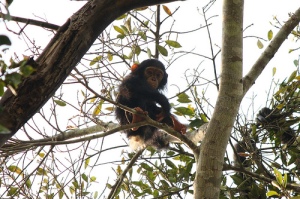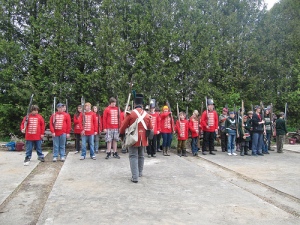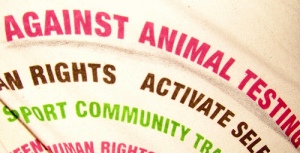This year, our class collaboratively read a book, Half Brother by Kenneth Oppel with a class in Manitoba via Skype, similar to our previous project last year with The Book Thief. The book is about two scientists and their son who buy a chimp for a sign-language project. The book is fiction, but based on a real-life project. After finishing, we then watched a documentary called Project Nim, which explores the true story of Nim Chimpsky, and human-raised chimp. These are some observations made during viewing.
Lukas Vermeer
There were many, many similarities between the documentary and the book. In both cases, the chimpanzee was taken into the home and raised without much conference about was going to happen next. Both stories took place in the 70’s (think retro!), and both chimps liked holding kitties (aww!). Both chimps (named Nim and Zan, respectively), were taught similar words (tickle, drink, hug), but it was revealed that they weren’t making speech. They ended up being sold to a medical lab. The projects started out good, but ended up shutting down due to financial problems. The chimp in each story was moved to a ranch, and subsequently made one friend each, both female.
There were also many differences, but not as many as there were similarities. The setting takes place in NYC in the documentary, but British Columbia in the book. Also, while teaching and disciplining Zan (chimp from book) were very well-handled, Nim (from documentary) wasn’t disciplined or had a maintained schedule at first. In the documentary, Zan was taken by a young student and her family, opposed to two scientists in the book. Zan was actually never tested on, and in the end he was given to a sanctuary while Nim lived out his life at the ranch. Nim lived in solitary more than Zan, and was quite a bit more violent.
While chimps seem to be very cute and cuddly, they can also be very wild and vicious. Nim would bite and attack caretakers if they moved very suddenly, or if they had food and wouldn’t or forgot to share some with him. Also, when Nim attacked, he would always draw blood and wouldn’t stop until he did so. There are also very disturbing scenes in which Nim is drugged and put onto a metal table, where he is given needles and IVs to test diseases and drugs.
Even though there were many disturbing images and behaviours in the documentary, there were also very many things to make you happy. It was just very exciting and truly rewarding to see Nim signing and making communication with his caretakers. When Herb (the scientist who started the project) reunited with Nim, Nim went crazy happy to see an old friend. When a lawyer went to fight for Nim in court, you couldn’t help but smile for some of the people’s determination to give Nim a helping hand. Seeing Nim having fun with other chimps at the ranch at the end after so many struggles was awesome; he was safe. And my favourite part was when Nim gets to hold and hug the chimp and spend time with him! 🙂
At the end of all this, there was lots of new information to be learned. A big one was that the book and the documentary were so very similar. They had both the basic storyline, similar characters (human and chimp), behaviours, and heartbreaks. The chimps also acted way more violent than I ever imagined; I didn’t know they could get that bad. I also was surprised (and disgusted) by how the chimps were really treated at the biomedical lab. The scientists would wait until the chimps got close to the bars, then jabbed them with the needles containing diseases and cures. Nim’s life was also very difficult; he went from place to place, and caretaker to caretaker. The most important one for me was that in the beginning of the project, no scientific procedures were used to raise him, and he wasn’t disciplined. Would Nim have acted better if discipline was established early on? Would that have changed where Nim was sent, or how he was treated? Both the documentary and the book are amazing, I would advise you to read them!










